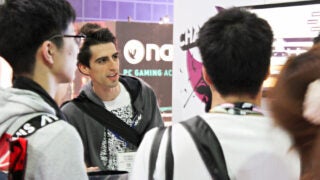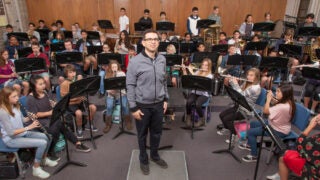The veteran of stage and screen is a dynamic choice to direct one of the nation’s most competitive programs.
News Listing
GFE3 may help researchers map the brain’s connections and control neural activity.
The addition of two stations will bring San Francisco’s Classical KDFC to the Monterey Bay area.
“It is important to discover those genes that can have a profound effect on how severely an individual is impacted by their disorder,” says Pat Levitt, a professor of pediatrics, neuroscience, psyciatry and pharmacy at USC.
USC — with a prominent presence at the Electronic Entertainment Expo — boasts one of the best video game design programs in the world. When it started in 2002, only a couple of the 15 students were women. Now, program director Tracy Fullerton says there are just as many women enrolled as men.
USC Games grads turn out in force for the annual entertainment expo offering talented designers a venue to get valuable feedback.
USC Thornton alumnus takes pride in his students helping each other to perform in an authentic way.
Brain connectivity atlas assists in the understanding of mental and neural disorders.
The cerebral cortex is the brain’s CEO; it regulates higher-order functions such as motor learning and attention through its connections to brain structures such as the dorsal striatum, which is historically divided into just four regions. Today, USC researchers said they are the first to create the most comprehensive map of connections between the dorsal striatum and the cerebral cortex that is available for any mammal.
Pinchas Gutter survived a Nazi death camp — and now his story will live on through a hologram that can answer your questions, thanks to USC’s Institute for Creative Technologies and USC Shoah Foundation.





